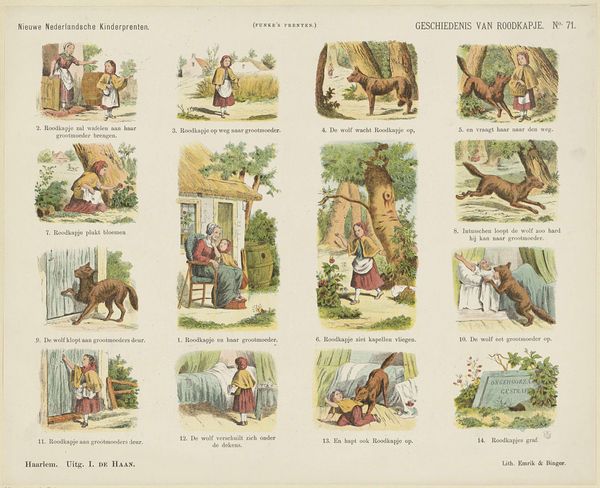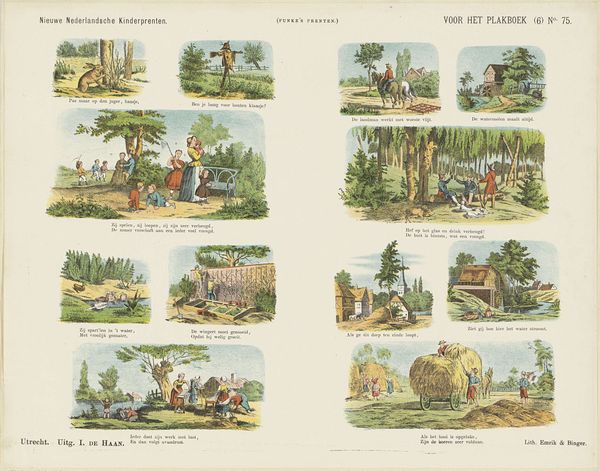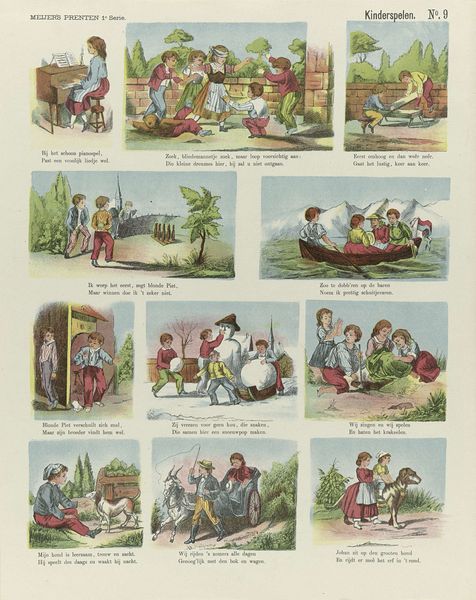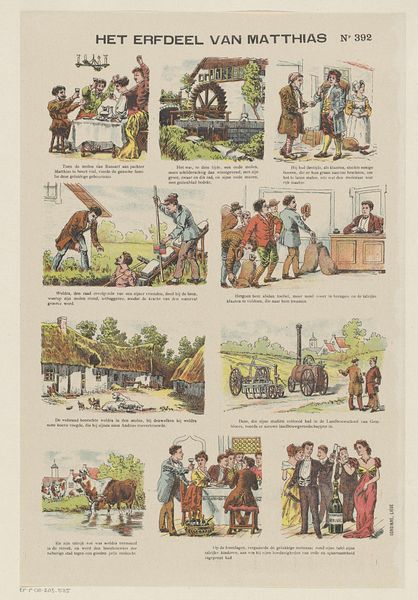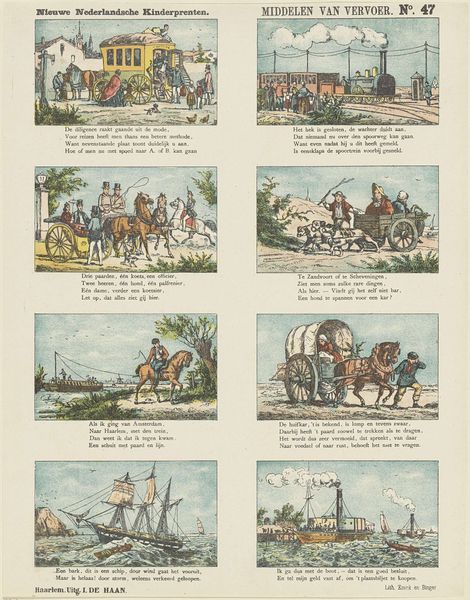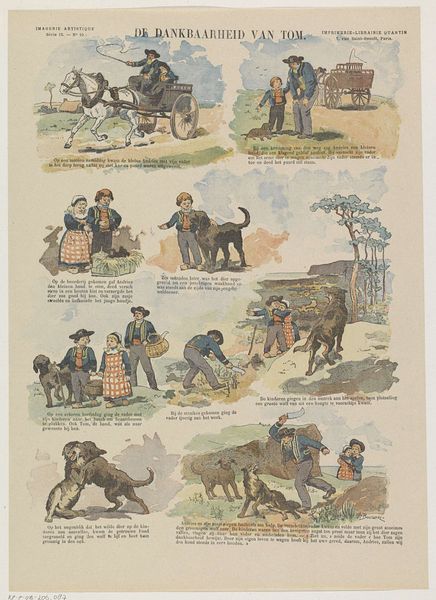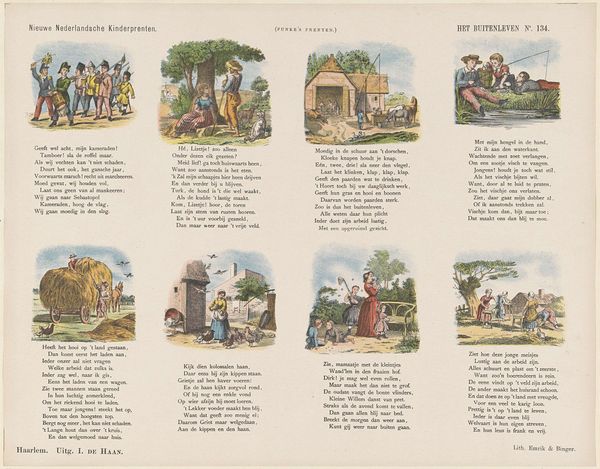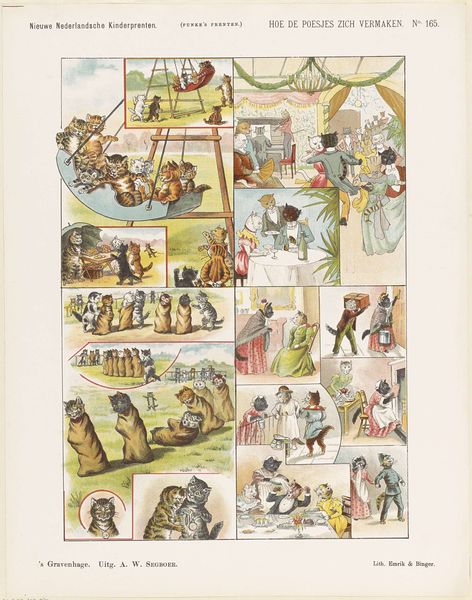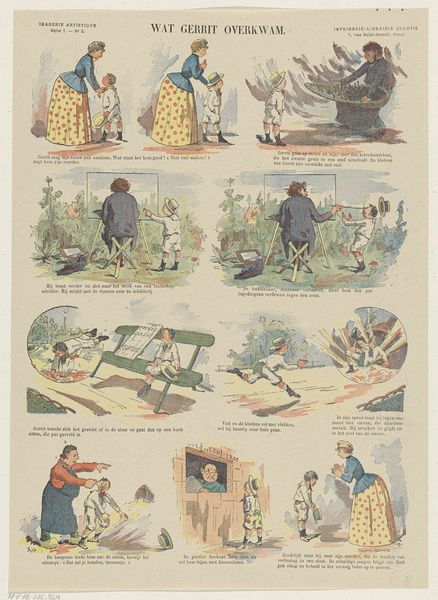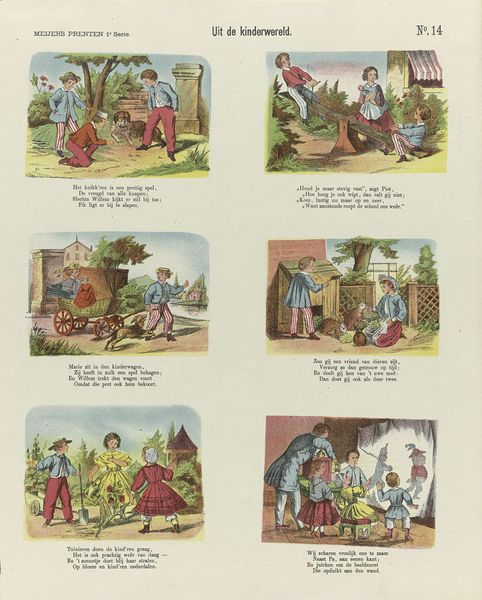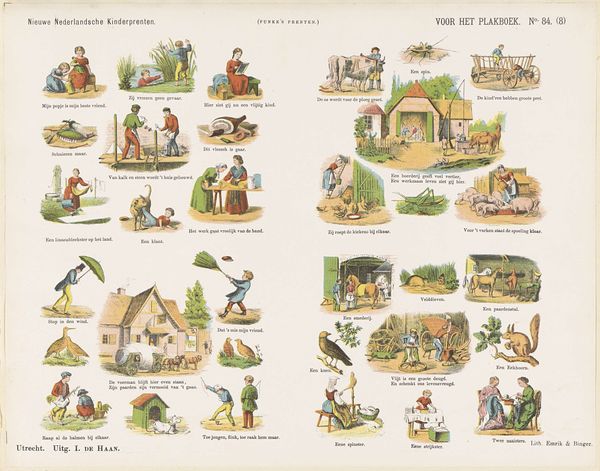
print, watercolor
#
aged paper
#
narrative-art
# print
#
sketch book
#
personal sketchbook
#
watercolor
#
sketchwork
#
journal
#
folk-art
#
pen and pencil
#
sketchbook drawing
#
watercolour illustration
#
storyboard and sketchbook work
#
sketchbook art
Dimensions: height 427 mm, width 349 mm
Copyright: Rijks Museum: Open Domain
Editor: So, this is "Het houten paard" or "The wooden horse," made sometime between 1903 and 1919 by Arie Willem Segboer. It’s a print with watercolor, almost like a page from a children's book. The images seem to tell a little story, a bit like a comic strip, but what I find curious is its emphasis on children’s games. What do you see when you look at this, particularly within the context of its time? Curator: It's interesting that you pick up on the children’s games. Consider this piece not just as a narrative, but as a reflection of early 20th-century attitudes towards childhood and play. How does the image present these children—are they idealized, or do you see elements of social commentary within their interactions and activities? Think about the rising tide of social reform movements during this period and how childhood was often central to those debates. Editor: Hmm, idealized… perhaps a bit. They seem carefree, playing in what appears to be a very ordered landscape. But then I notice the barrier that they’re sliding off. There’s also that sign, in the third image on the left, saying “no children” or something along those lines. Curator: Exactly! It’s important to unpack this supposed innocence. Who is excluded from this ideal? The presence of boundaries, rules, even the slight mischievousness suggests underlying social structures and constraints. Can we read these elements as subtle critiques of social divisions related to class, access, and maybe even emerging notions of public versus private space in a rapidly changing society? Consider how the game itself – "The Wooden Horse" – might be a metaphor. Editor: So it is both innocent and making a statement? I never considered children's games that way. This piece makes you question so much more. Curator: Precisely. Art provides these possibilities; the potential to view everyday situations through a more critical and aware lens. Considering art from children’s books provides unique insight into how cultural values and ideas of social structure are developed.
Comments
No comments
Be the first to comment and join the conversation on the ultimate creative platform.
